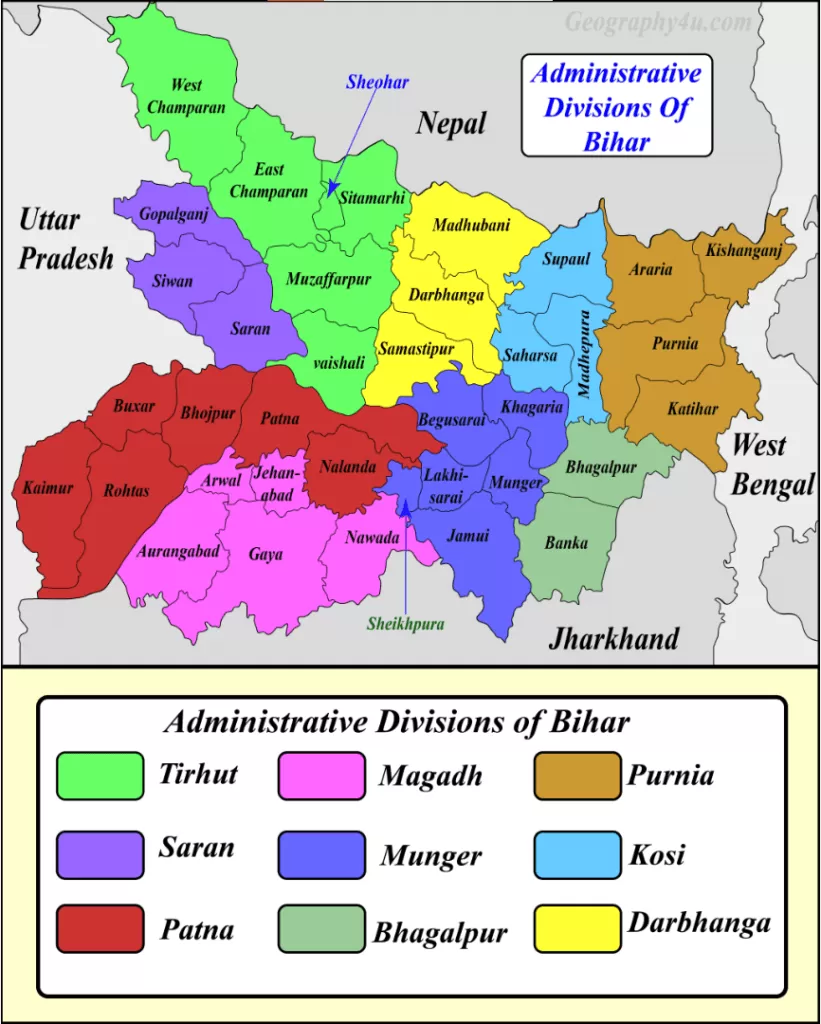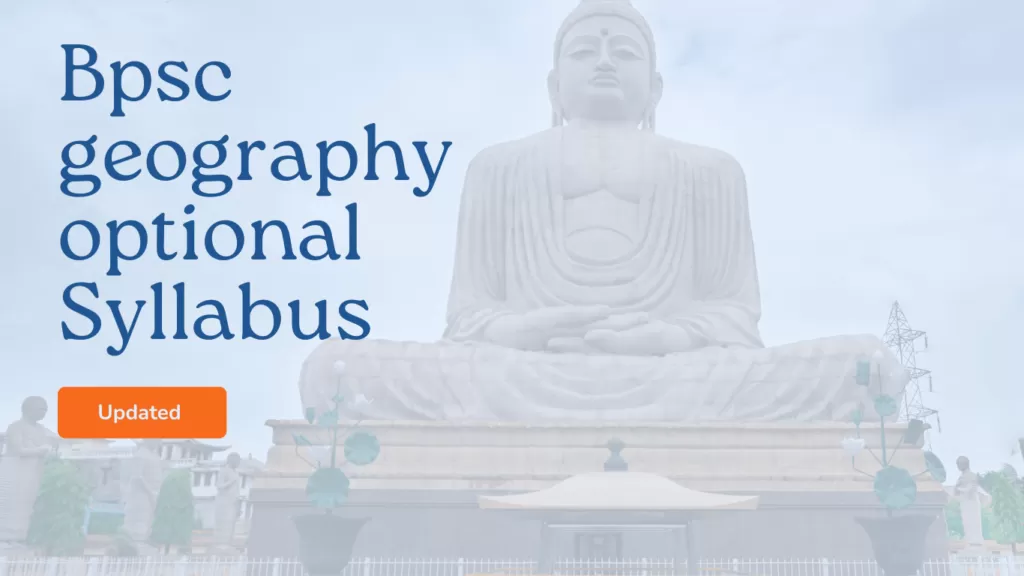For the last few years, Bihar public commission has continuously released vacancies in various departments. We all know the syllabus in bpsc exam is very vast. So, it becomes important for all the ongoing aspirants to have a crystal clear idea about the bpsc geography optional syllabus. In this post, you will get an idea about the topics which you have to study for bpsc geography optional. Read and revise all the topics
Table of Contents
Updated bpsc geography optional syllabus 2022
The following are the topics and subtopics included in the 67 bpsc geography optional exam. Go through all the topics and try to make notes related to these topics.
Section: A Physical geography, and Human and economic geography
Part A- Physical geography
The following are the topics covered in physical geography. Many of these topics and subtopics are also included in the UPSC geography optional syllabus. So, if you are already preparing for UPSC exams, the common topics between bpsc geography optional and UPSC geography optional will help you a lot.
| 1. Geomorphology– origin, and evolution of the earth’s crust: earth’s movements and plate tectonics; volcanism; the cycle of erosion- Davis and Penck; fluvial, glacial, arid and karst landforms; rejuvenated and polycyclic landforms. 2. Climatology- The atmosphere, its structure, and composition; air masses and fronts; cyclones and related phenomena; climatic classification; Koeppen and Thornthwait; groundwater and hydrological cycle. 3. Soils and vegetation- Soil genesis, classification, and distribution: ecological aspects of savanna and monsoon forest biomes. 4. Oceanography- Ocean bottom relief, Relief of Indian Ocean floor. Salinity. currents and tides; ocean deposits and coral reefs. 5. Ecosystem– Ecosystem concept, Man’s impact on the ecosystem, global ecological imbalances. |
Part B-Human and Economic Geography
| 1. Development of Geographical Thought- Contributions of European and British Geographers, determinism and possibilism; Dualism in Geography, quantitative and behavioral revolutions in geography. 2. Human Geography- Emergence of man and races of mankind cultural evolution of man; major cultural realms of the world; international migrations, past and present; world population distribution and growth; demographic transition and world population. 3. Settlements Geography- Concepts of rural and urban settlements, Organs of Urbançation; Rural settlement patterns; city classifications; urban spheres of influence and the rural-urban fringe, the internal structure of cities; problems of urban growth in the world. 4. Political Geography- Concepts of nation and state; frontiers, boundaries, and buffer zones; the concept of heartland and rimland; federalism. 5. Economic Geography- World economic development-measurement and problems; the concept of resources, world resources, their distribution and global problems; world energy crisis; and limits to growth; world agriculture-typology and world agricultural regions; theory of agricultural location, world industry-theory of location of industries; world industrial patterns and problems; world trade and world trade patterns. |
Section 2a- Geography of India

| 1. Physical Aspects- Geological history, Physiography, and drainage systems; origin and mechanism of the Indian monsoon, soils, and vegetation. 2. Human Aspects– Tribal areas and their problems; population distribution, density and growth; population problems and policies. 3. Resources– Conservation and utilçation of land mineral water biotic and marine resources; ecological problems and their management. 4. Agriculture– Irrigation intensity of cropping, crop combinations, green revolution, agricultural land use policy, Rural economy-Animal husbandry, social forestry and household industry. 5. Industry- History of industrial development; factors of location study of mineral-based, agro-based, and forest-based industries, industrial complex, and industrial regionalization. 6. Transport and Trade– Study of the network of roadways railways, waterways, intra and inter-regional trade and the role of rural market centers. 7. Settlements- Rural Settlement patterns; urban development in Indian and its problems, the internal structure of Indian cities; town planning, slums and urban housing; national urbanization policy. 8. Regional Development and planning- Five-year plan; multilevel planning; state, district, and block level planning regional disparities in development in India. 9. Political Aspects- Political problem of India, state reorgançation; the international boundary of India and related issues; India and geopolitics of the Indian Ocean area. |
Section 2b- Geography of Bihar

- Physiographic divisions
- Soils
- Forests
- Climate
- Pattern of agriculture
- The problem of drought-prone and flood-affected regions and their solutions
- Chief minerals resources: iron ores, copper, bauxite, mica and coal
- Principal industries: iron and steel, aluminum, cement, sugar
- Principal industrial regions
- Problems of the population in Bihar
- The problem of tribal population and their solution
- The pattern of urbanization of Bihar
Download free bdf of bpsc geography optional syllabus 2022-23
Read More posts


Pingback: Detailed Bpsc syllabus 2022-23 | Geography4u.com